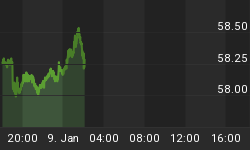The minutes of the August FOMC meeting were released on Tuesday. The minutes revealed that the decision to "keep policy unchanged at this meeting was a close call." The minutes also said that "additional firming could well be needed." While the minutes and recent speeches portray that Fed officials are being cautious regarding the inflation concerns and growth prospects, the Fed continues to think that the slowing economy will cause inflation pressures to subside. Now that the economy has started showing signs of weakening, if inflation measures do not moderate, future meeting could become quite contentious. Economists and traders continue to maintain the Fed to keep the target rate at 5.25%.
Second quarter GDP growth was revised up to 2.9% from 2.5% initially. This was slightly lower than the 3.0% economists forecasted. We have long discussed the strength in commercial construction. Non-residential structures jumped 22.2%, almost twice the 12.7% initially reported. It also accounted for 60 basis points of GDP growth instead of 36 as originally reported. Residential construction was revised down to -9.8% from -6.3% was a drag on GDP by 63. In aggregate, the increase in commercial construction has offset the decline in residential construction. Larger increases in inventories along with stronger exports were other significant revisions that accounted for the stronger GDP growth. Economists point to higher wages as the catalyst to maintain economic growth as the housing market weakens. The Commerce Department also reported that personal income increased 5.7% in the second quarter and first quarter income growth was revised to 6.8% from 3.8%.
While economy expanded at a healthy pace in the second quarter, signs that economic growth has started to wane have increased recently. Consumer confidence fell 7.4 points in August to 99.6, the lowest since November 2005. Consumers were less optimistic regarding the present situation as well as for the next six months. The present situation component fell 10.8 points to 123.4, while expectations dropped to 83.8, 5.1 points lower than July. Most of the weakness regarding the present situation was centered on the labor market. The labor differential (difference between those that see employment plentiful versus hard to get) fell 5.7 points to 3.3. This was the most pessimistic consumers have been this year. Additionally, the Consumer Comfort index from ABC News dropped 5 points to -19, matching the lowest level of the year.
The slowing housing market has started to cause concern in the credit market. Last week, H&R Block announced that its will set aside $61 million for possible losses due to homeowners falling behind on payments. It is more concerning considering that these delinquencies are happening within the first few months of the mortgage. It shouldn't be surprising that the slower real estate market has caused mortgage originations to slow. This week, First Horizon said that its originations will be $1 billion less then in the previous quarter. This will impact operating earnings by $35 million.
Investors have been complacent since loss ratios are low and the problems have been confined to the sub-prime market. Conventional analysis of loss ratios usually lags reality for two reasons. First, since home prices have appreciated, homeowners that were struggling with their monthly bills could simply sell the house and cover the amount of the mortgage. Additionally, as mortgage volumes have soared, loss ratios will be understated. Loss ratios are reported as a percent of total loans. Typically, loans do not experience delinquency during the first few months. This means as the loan portfolio continually expands, the older loans that are more likely to be delinquent make up a smaller part of the total loan portfolio that is the denominator. As soon as loan growth stops, the denominator stops growing faster than the more mature loans which usually see delinquencies rise so the ratio of nonperforming loans can jump materially very quickly.
Retailers will report August results on Thursday. While the ICSC surveys have indicated that retail sales have rebounded from July, several retailers that reported second quarter earnings this month have commented that August results have been weaker than anticipated. This week, the ICSC reported that chain store sales increased 3.6% compared to last year. This was the largest increase since the end of June. For the month, the ICSC expects same store sales in have increased 3.0% in August.
Looking back at retailers that reported earnings in August, an interesting dynamic appeared. Those that reported earlier in the month reported strong results and generally had better guidance for August. Those that reported later in the month, including Williams and Sonoma and Chico FAS sounded much more cautious regarding the retail environment. This could prove that consumer spending weakened during the month. Conversely, Wal-Mart reported that its same store sales rose 2.7% in August, which is on the high side of the 1%-3% range the company expected. This was the strongest result since April.
It will be increasingly important to monitor the health of the consumer. Consumers have been relying on housing appreciation to support consumption. Now that the housing market has started to weaken, it's likely that consumer spending will weaken as well. Income growth has accelerated and might be able to support spending in the short-term. There will likely be geographic differences as well. Areas that experienced the hottest housing markets will likely experience the largest corrections which will weigh heavily on consumers.
















